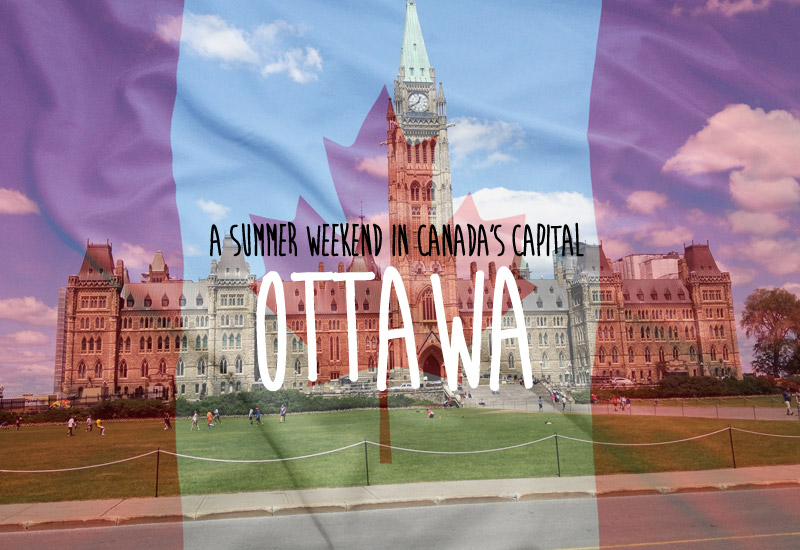
As we enter the second half of the annual Ottawa Bluesfest in Canada (running until 17th July), we’re bringing you the second half of our feature on a summer’s weekend in Canada’s capital city. A couple of weeks ago we filled you in on the places to eat, drink and shop, and now this week we take some time to look at some of the more touristy things to do in the city – as well as what’s across the river in the neighbouring French-speaking town of Gatineau, Quebec.
Like any Capital city, a lot of what one would consider a tourist’s activity in the area is positioned as much for school field trips as it is for the everyday tourist – be they from Australia or otherwise. So whether it’s a Parliamentary building, an art gallery or a state-of-the-art museum, there’s a huge range of activities to enjoy; much of which will teach you about the history of Canada – and all of which will impart some knowledge on you, the intrepid traveller.
A paddle before the stroll…
But before you take that plunge into the individual galleries and buildings, you should get to know a little bit more about the city you’re in. For that, we jumped onto Paul’s Boat Line, which we boarded at the foot of the Rideau Canal, right by Parliament Hill. The canal – whose name is French for “Curtain” – has been in operation since 1832 and connects the Ottawa River to Kingston on Lake Ontario, and during winter becomes a transportation method for the locals. They jump on the frozen canal and skate to work in the morning; vendors even offer drinks along their journey. When Canadians say they don’t let the cold weather stop them from living their lives they weren’t joking. It seems like they go so far as to let it improve it… as much as freezing cold weather can improve anything, anyway.
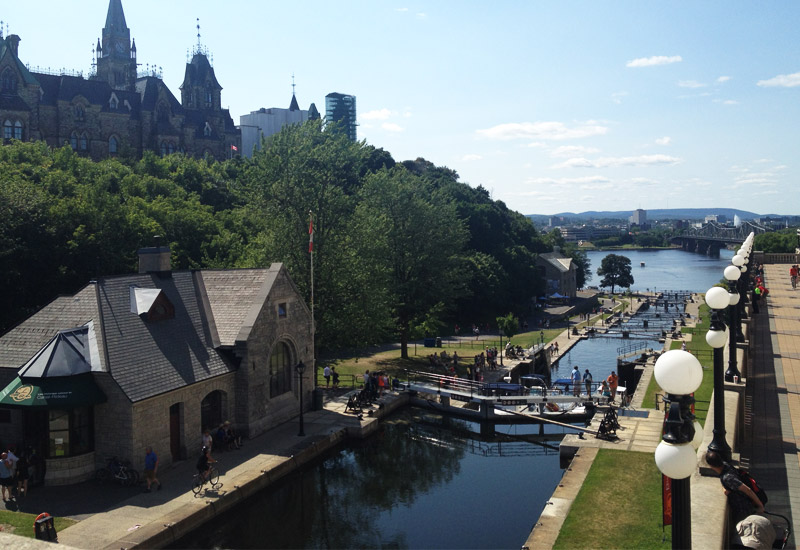
On board the ship named “Paula D”, you take a bilingual 90 minute journey that costs $25, and learn a lot of information like this. You start with our view of the canal, in between Parliament Hill and the Fairmont Hotel, and then journey into further waters. Along the way, you travel past some magnificent properties; many serving as residences for ambassadors from around the world. We learn more about the history of the city, and also its neighbouring Quebec counterpart.
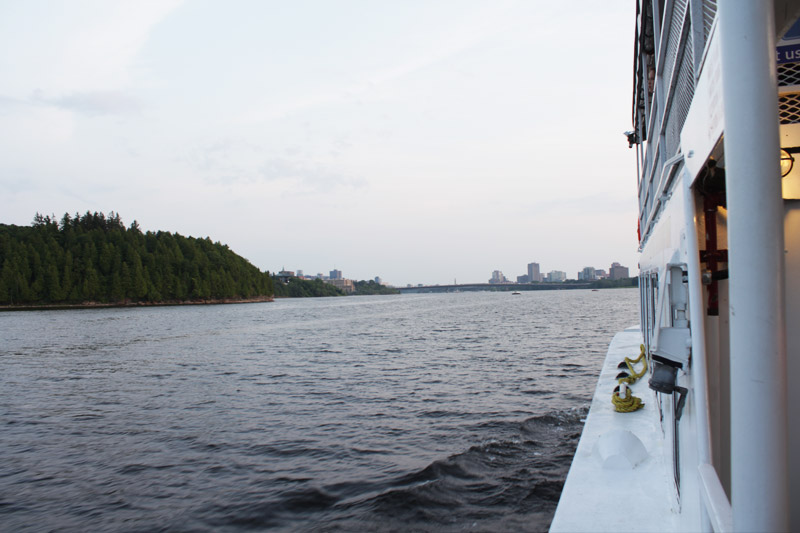
We also see the Rideau Falls, which have been reinforced over the years but remains a natural (and beautiful) part of Ottawa, sitting right alongside Rideau Falls park. The falls continue to be used for hydroelectricity. Our journey, which was the 730pm sunset cruise, offers beers on board and was a wonderful way to watch the sun set and say goodbye to one of our days in Ottawa.
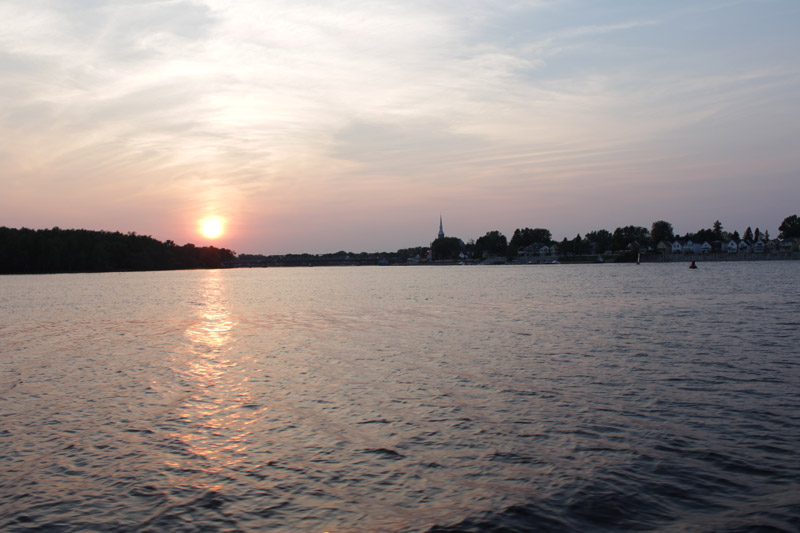
The Museums of Ottawa
Earlier in the day, however, we’d spent it museum hopping. One of the most popular museums in Ottawa is the Canadian Museum of Nature, whose collection was started in 1856, while the gothic building you visit today opened back in 1912. The newer glass structure you see at the front of building, however, was part of major renovation that was completed in 2010.
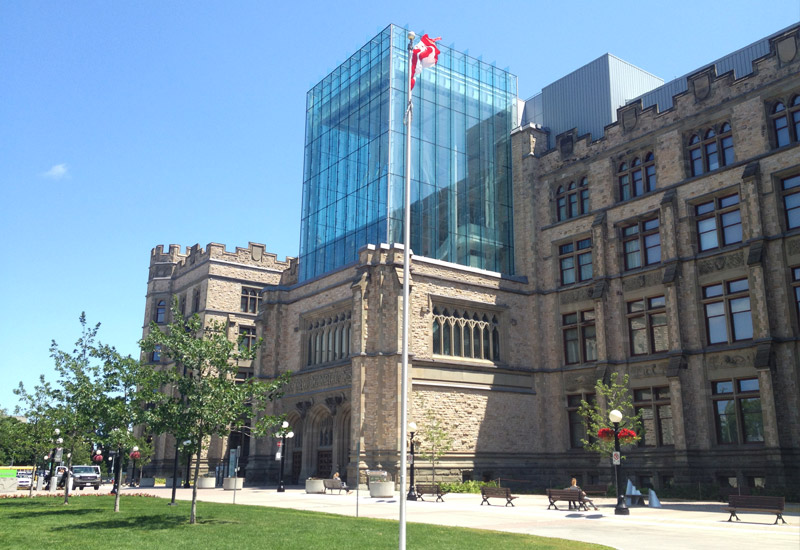
There are a number of permanent galleries in the museum, and the vast number of bones and skeletons you’ll find throughout the museum is quite impressive. In the Fossil Gallery, you’ll find plenty of dinosaurs, while in the Blue Water Gallery you’ll come across the skeleton of an incredible 19m blue whale. Fun fact: Blue whales are the heaviest animals to ever live on the earth. Bigger than any dinosaurs. Yeah! Take that, T-Rex.
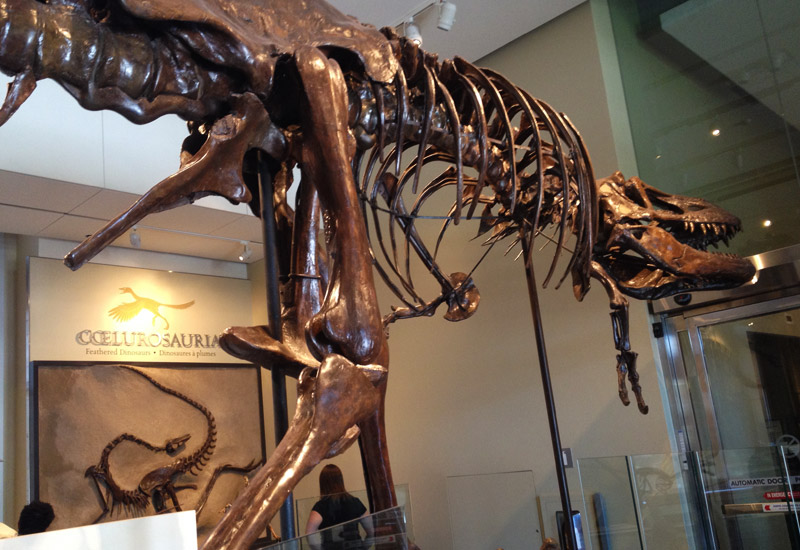
Elsewhere, the kids can dissect owl pellets, you can see hundreds of bird mounts in the Bird Gallery, and encounter live insects in the Animalium, which you’ll find on the top floor. They also screen IMAX 3D movies for an extra $4 – note, however, they only use a regular sized screen. So don’t get too excited. Still, they offer two alternating films. At the moment they are Walking with Dinosaurs: Prehistoric Planet 3D and Amazing Mighty Micro Monsters 3D.

As for what’s on at the moment? Their “Ultimate Dinosaur” exhibition is on until 5th September 2016, which showcases unique dinosaurs from the Southern Hemisphere. And the Landscapes of Canada Gardens, which were under construction on our visit, officially opened last month, showcasing a spectacular terrain that will take you back to the ice age, with Woolly Mammoths and the above Iceberg sculpture.
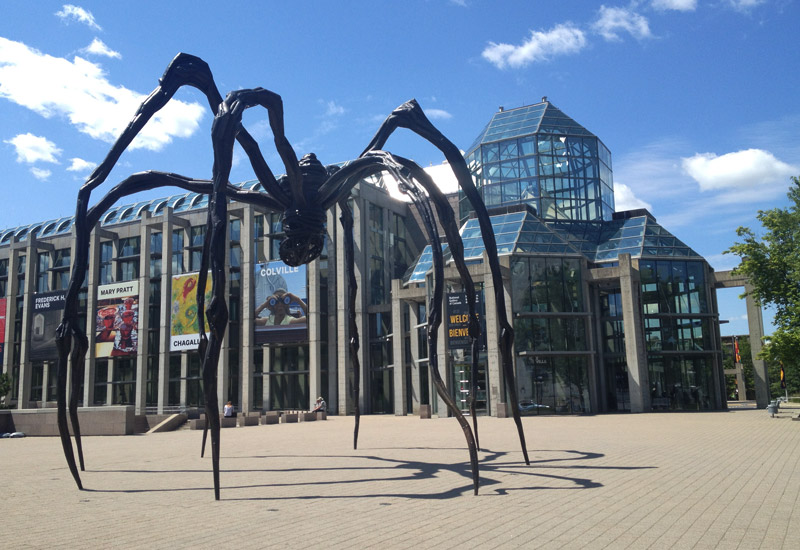
Next, we headed to the National Gallery of Canada, which opened the doors of its current site in 1988. Interestingly, established in 1880, it was once housed in the same walls as the Museum of Nature we visited earlier. This is an incredibly well designed museum, full of a myriad of works that start to impress before you’ve even entered the building – the above spider (complete with see-through eggs as you walk underneath) standing tall at the entrance (Louise Bourgeois’ Maman, 1999).
The centrepiece of the gallery is the Rideau Street Chapel, originally built in 1887 before being demolished and reconstructed as a piece of art in time for the building’s original opening. Voices sing constantly in the room, and its sound permeates the surrounding areas; including a tranquil water feature enveloped by small sculptures and the flower garden that serves as its entryway, which can be viewed from both floors.
Unsurprisingly, the gallery is home to the country’s largest collection of Canadian works, and alongside this hold pieces from the likes of Dali (1933’s Gala and The Angelus of Millet Before the Imminent Arrival of the Conical Anamorphoses), Cézanne (Forest), Vincent van Gogh (Iris), Picasso (The Small Table), Pollock (No. 29, on glass) and Andy Warhol (his famed Brillo boxes). In addition to the permanent collection, the sizable building holds temporary exhibitions. Currently you can see an exhibition on Joseph Beuys, spanning four decades of the German artist’s work, a special Picasso exhibit “Picasso: Man and Beast. The Vollard Suite of Prints” and the work of contemporary Canadian artist Chris Cran. Have a look through these exhibits and more HERE.
Pop over the river to Gatineau, Quebec
If you manage to get through all of this and still have time left over, jump on public transport or into a Taxi/Uber and head across Ottawa River to Gatineau, Quebec – interestingly the fourth largest city in the Province after Montreal, Quebec City, and Laval. In the space of a five minute drive it’s like entering a different country. People don’t speak English (or at least refuse to, speaking instead French Canadian, or Québécois as it’s known), the drinking age is 18 instead of 19 and the cuisine and atmosphere feel a world apart. It’s something I’ve only ever experienced in Europe; but even then you’re looking at a couple of hours between locations.
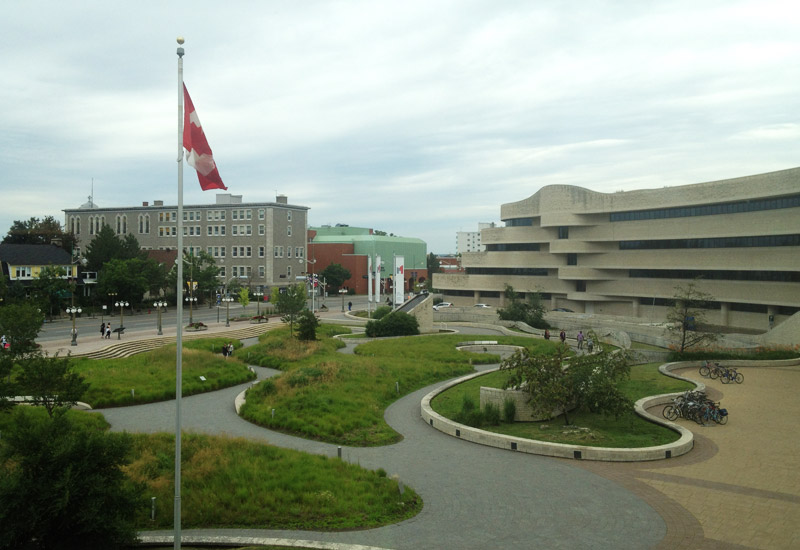
Here, in addition to enjoying some incredible Quebec food (including, of course, Poutine – though I strangely had one of the best Cuban sandwiches ever during my visit), you can head to the Canada Museum of History. Until 1988, this museum shared the space with the Museum of Nature we visited earlier (notice a trend?). Now they’re not only apart, but sitting in different Canadian provinces. It’s no surprise why they had to part ways though – the building and its collection is massive, with a permanent gallery on the ground level focusing on the indigenous art of the region in the “Grand Hall” and the “First Peoples Hall”. There’s a compelling design as you walk through houses and under faux trees, onto the other exhibitions in the museum, which are ever changing. You can have a look through what’s on offer HERE.
The museum is the most visited in all of Canada – if their own promotions are to be believed – with 25,000 square metres of display space and some 20,000 years of human history presented. Entry is $15 for adults, or $20 if you’d like to see an CINÉ+ film, which at present is Wild Africa 3D, showing on a giant screen in 4K resolution with 295 seats.
There and back again…
While all this barely scratches the surface of the museums and galleries you’ll find in Ottawa (and Gatineau), these aren’t the only places you can learn more about the Country and its Capital city. The final stop on our tour of the city takes us back to where we started – Parliament Hill.
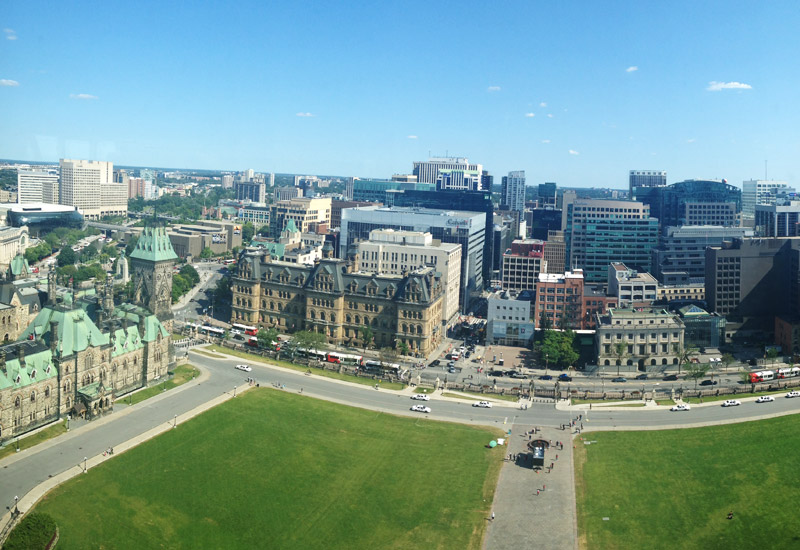
One of the most popular tourist stops in the city is the trip to the building’s Memorial Chamber and the top of the Peace Tower, which is the Parliament of Canada’s clock tower. Taking you up 9 levels, past all the bells, it gives you a pretty amazing view, which you can see above – and you learn a lot of the building along the way. There’s naturally a lot of security to get into the tower, and to get in you have to pre-book a visiting time earlier in the day, so plan this one well. To learn more about what you can do and when you can do it, visit this guide for visitors to the building HERE.
Every night through the Summer you can also stick around for the impressive and free “Northern Lights” sound and light show, which covers the Parliament building in projections and tells a story in both French and English about the history of Canada, Ottawa and this building – which had been partially destroyed by fires 100 years ago.
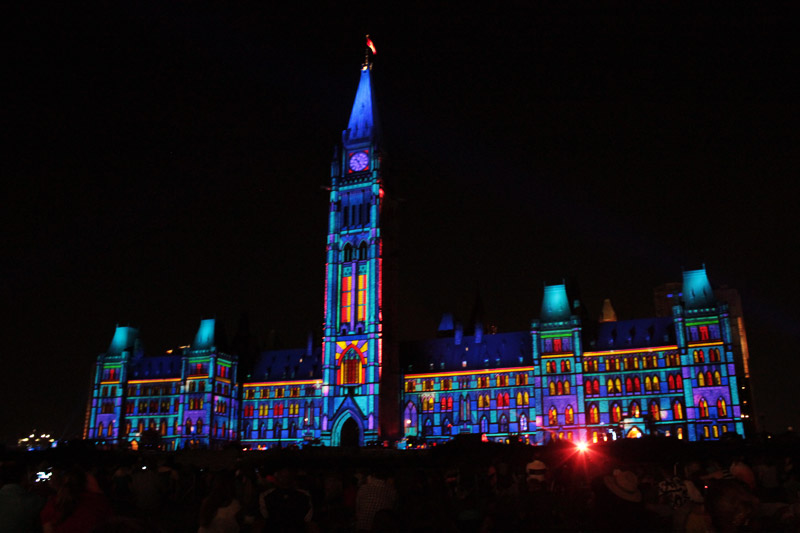
It’s a spectacular show, but be prepared to get patriotic for a Country you may or may not be from… If you didn’t know the Canadian National Anthem don’t worry – you will by the time you leave.
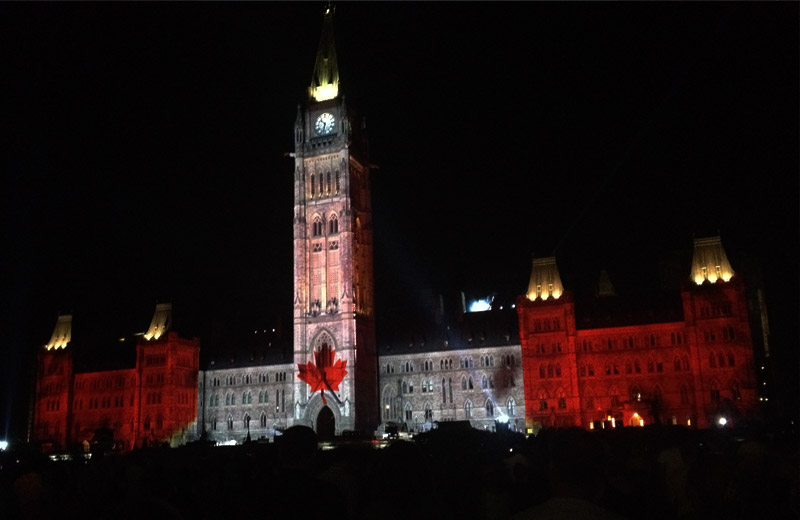
The heart of Canada’s political system, Ottawa also sits as the home of its art and culture. While cities like Toronto, Montreal and Vancouver may be creating the country’s newest and most successful modern art scenes, Ottawa ensures that the past is preserved for generations to come. And for a visitor to the city that makes for a pretty packed Summer’s weekend, jammed full of knowledge, Beavertails and – especially this week – a whole bunch of live music.
Getting around in Ottawa
Getting around Ottawa is pretty easy – I usually jumped in an Uber when I needed to go somewhere, as everything was pretty close by, and taxis were fairly easy to come across when Ubers weren’t. You can grab an Uber from the airport to the city for under $20 and if you do jump on public transport, buses cost $3.65 to ride unless you have a Presto card – the city’s equivalent of an Opal (Sydney, Australia) or the Oyster (London, UK) – in which case it’s a $3 charge. You can find out more about the city’s public transport network HERE.
Learn more about the featured attractions in this article
Pauls Boat Line: www.paulsboatline.com
Canadian Museum of Nature: nature.ca
National Gallery of Canada: gallery.ca
Canadian Museum of History: historymuseum.ca
Parliament of Canada: lop.parl.gc.ca
The writer visited Ottawa as a guest of Ottawa Bluesfest and Ottawa Tourism. Air Canada got us to Ottawa from Sydney via Vancouver with the support of Ottawa Tourism and Destination Canada. While in Ottawa we stayed within walking distance of the festival at the The Albert at Bay Suite Hotel (435 Albert Street), courtesy of Ottawa Bluesfest and Ottawa Tourism. All prices are in Canadian Dollars and were correct at the time of our visit. Please check with the individual establishments for the latest pricing. Photos by the author unless otherwise mentioned.
———-
